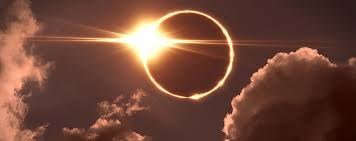People from all around the world gathered to witness a Total Solar Eclipse this past Monday. Here in Thompson, Manitoba, however, locals were treated to a Partial Solar Eclipse that began at 1:04 pm, peaked at 2:04 pm with a 0.488 Magnitude, and concluded at 3:04 pm, with a full duration of 1 hour and 59 minutes.
While some schools kept their students indoors during the event, others took advantage of it as an educational opportunity. "We used this as an excuse to learn and have some fun," said Stephanie, a mother from one of the schools.
The school divisions recorded a 22% absence rate from classes during the eclipse. It was the first total solar eclipse since 1979 to cast its shadow on Canadian soil, and people were excited to witness the spectacle.
Hilding Neilson, an astrophysicist from Memorial University, was in Gander, N.L., for the event with some of his students. He was emotional and struggling for words as the sun reappeared and soaked the area in its light. "It was just remarkable, just an amazing experience," he said. "Just before totality, feeling it get darker, we felt the temperature drop... it was just amazing to see the darkness.”
The moon is about 400 times smaller than the sun, but it’s also about 400 times closer to the Earth. The bright, clear sunny sky made for the most perfect weather conditions for those with dimmed glasses to witness the planets' alignment.
Total solar eclipses have been central to some major scientific breakthroughs. Helium was detected for the first time during an 1868 eclipse, and observations made in 1919 helped establish broad support for Albert Einstein’s theory of relativity.
In 1979, Manitoba was in the path of totality, and school-aged Scott Young was mesmerized. That’s the moment the Manitoba Museum Planetarium astronomer was hooked. “The entire horizon was covered in the colors of twilight, and my head just exploded,” he said. However, the partial eclipse on Monday was shrouded in clouds behind him.
While the next total solar eclipse in Canada is expected to pass through western provinces in 20 years, the phenomenon only happens in any given location roughly once every 360 years, according to some estimates. Some areas have waited even longer, like Kingston, Ont., which last fell under a total solar eclipse almost 700 years ago.
As people continue to marvel at the beauty of a solar eclipse, it remains a reminder of the wonders of our universe and the importance of exploring and discovering all that it has to offer.
~Matthias J. Johnson is a Local Journalism Initiative reporter who works out of the Thompson Citizen. The Local Journalism Initiative is funded by the Government of Canada.




